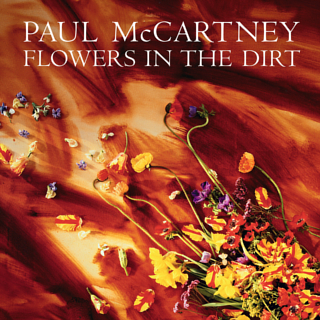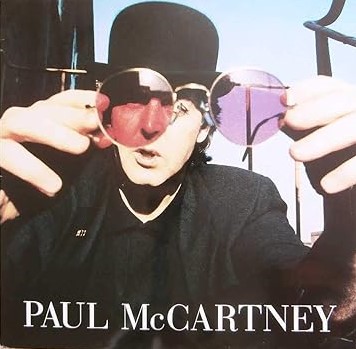Listen to this track by Britpop forefathers and British cultural envoys The Kinks. It’s “Come Dancing”, a huge comeback hit for them that appears on their 1982 record State of Confusion. After spending a chunk of the Seventies as an arena rock band, and scoring less of a return than their peers in that format despite great songs and albums, head writer Ray Davies considered his one-time niche as a songwriter who told stories infused with affection and warmth for down to earth English life. He sought to write a new song that returned to that approach. With “Come Dancing”, The Kinks brought it all back home (literally!), resulting in their biggest hit since 1970.
Label bosses at Arista were initially pretty twitchy about releasing it as a single. They feared that the British music hall references to the local palais would fly over the heads of North American listeners. The band must have felt a sense of déjà vu with these kinds of sentiments about their music which, since at least 1965, had leaned into its celebration of British culture. But this time, what listeners responded to on a global scale was the story this song tells, set in an innocent, idealized world of cuddles and pecks on the cheek after a Saturday night of cutting a rug with a date. What could be as relatable as that on both sides of the pond and everywhere else, particularly by the more jaded age of the early Eighties?
“Come Dancing” was a smash success for the Kinks. But it was more than just a comeback hit. For songwriter Ray Davies and also his lead guitarist brother Dave, this song about a free-spirited sister going out to dance held a deeply personal meaning for them, too, attached to circumstances that were less than joyful.
To set the scene musically speaking, “Come Dancing” is a seamless amalgam of modern rock music as it meets with vintage R&B, big band music, and even a hint of ska and calypso. This musical mélange is the perfect backdrop to a compelling narrative that makes “Come Dancing” one of the greatest story-songs of the 1980s, if not for all time. It definitely made for a great video starring Ray as a pencil-mustachioed London chancer on the make. This was during a crucial time for bands who were seeking to make an impact on new audiences on MTV and other video channels.
The heavy rotation of the music video certainly helped to make this song a memorable hit of the era. It helped to raise The Kinks’ profile during a period when it was time for them to capitalize on the momentum created by the popularity of cover versions of their songs. This included The Pretenders (“Stop Your Sobbing”), The Jam (“David Watts”), Van Halen (“You Really Got Me”, “Where Have All the Good Times Gone?”), and others who paid homage to The Kinks’ place in the rock firmament.
As for “Come Dancing”, the song’s story is as fictional as the idealized 1950s world it conjures. However, Ray and Dave really did have an older sister who loved to dance. Rene, who was 18 and 22 years their senior respectively, married and moved to Canada when the brothers were still children. Rene returned on occasion to visit with her family in Fortis Green, North London; the site of the Davies family home. During one visit, she invested in a Spanish guitar coveted by her younger brother Ray. She gave it to him on on June 21st, 1957; his thirteenth birthday. Rene did this not knowing that one day he’d write a hit song in tribute to her. But she wouldn’t get a chance to hear it.
As much as she loved to dance, Rene had a weak heart due to an illness she suffered when she was a child. On that same visit back to Fortis Green, and on a night out dancing the same day she’d given Ray his present, she died of a heart attack. Ray talked about the impact of these events that were so closely grouped together.
She was an artist herself and seeing her go that way and the impact it had on the family, I didn’t realize what a watershed it was. She gave me my first guitar, which was quite a great parting gift. On the piano she played, the day she died — I wrote most of my early hits in that same room. It’s where I was born, in that room.
-Ray Davies of the Kinks, NPR.org, November 26, 2014
(read the whole article)
The song that came out of his memories of his sister and the world she inhabited had been in Ray’s head for some time. He’d written a sketch of it on a Casio keyboard months before, and then filled out the whole arrangement and laid down the track in his Konk Studios in late 1982. This was in preparation for the single’s release in November of that year. Yet it’s easy to think that the song existed in his artistic brain for far longer before that, going back to his earliest inclinations to write music and form a band.
With the memory of his sister, her artistry, her generosity and supportiveness, all captured in the moment before she went out for a night of dancing never to return, “Come Dancing” redeems the feelings associated with that terrible loss. It celebrates his sister Rene by giving her the life she should have had; married and living on an estate while having to manage her own daughters in the same way her mother had for her, staying up to wait for them when they came home late from a happy night out.
Ray Davies live at The Grand Canal Theatre in Dublin, May 7, 2010 (image: Sean Rowe)Overall, “Come Dancing” is a time capsule to a memory and an era long gone. It’s also a way to keep a beloved person and her world preserved for all time. In a present time where treasured sites of great personal and cultural importance are so casually knocked down, making way for supermarkets and then car parks instead, it can seem as if those wonderful locations never existed at all. In the end, perhaps that’s what all great pop music helps us to do; remember the worlds and people we’ve left behind along with the physical and emotional geography they continue to represent for us.
As for the Kinks, the boost to their profile that “Come Dancing” provided was their last hurrah as a charting band in the top twenty. Original Kinks drummer Mick Avory left the group in 1984, happy that they’d scored one more big hit song and by virtue of that considering it a good time to make his exit. By 1996, and in time for a whole new crop of British guitar bands to namecheck them in interviews, The Kinks broke up, officially.
Ray kept busy with multiple projects. One of those was the 2008 production of Come Dancing, the Musical which extends the life of what the song accomplished as the story of a family, and along with it, the memory of his sister as well.
For more on The Kinks and their mighty, mighty body of work that goes back to 1964 and stretches across musical epochs into the early 1990s, you can check out thekinks.info.
There’s also raydavies.info to consider as well, with Ray being one of the greatest British songwriters of all-time and being an active artist today.
Enjoy!
https://thedeletebin.com/2024/08/05/the-kinks-play-come-dancing/
#80sMusic #RayDavies #songsAboutChildhood #storySongs #TheKinks





